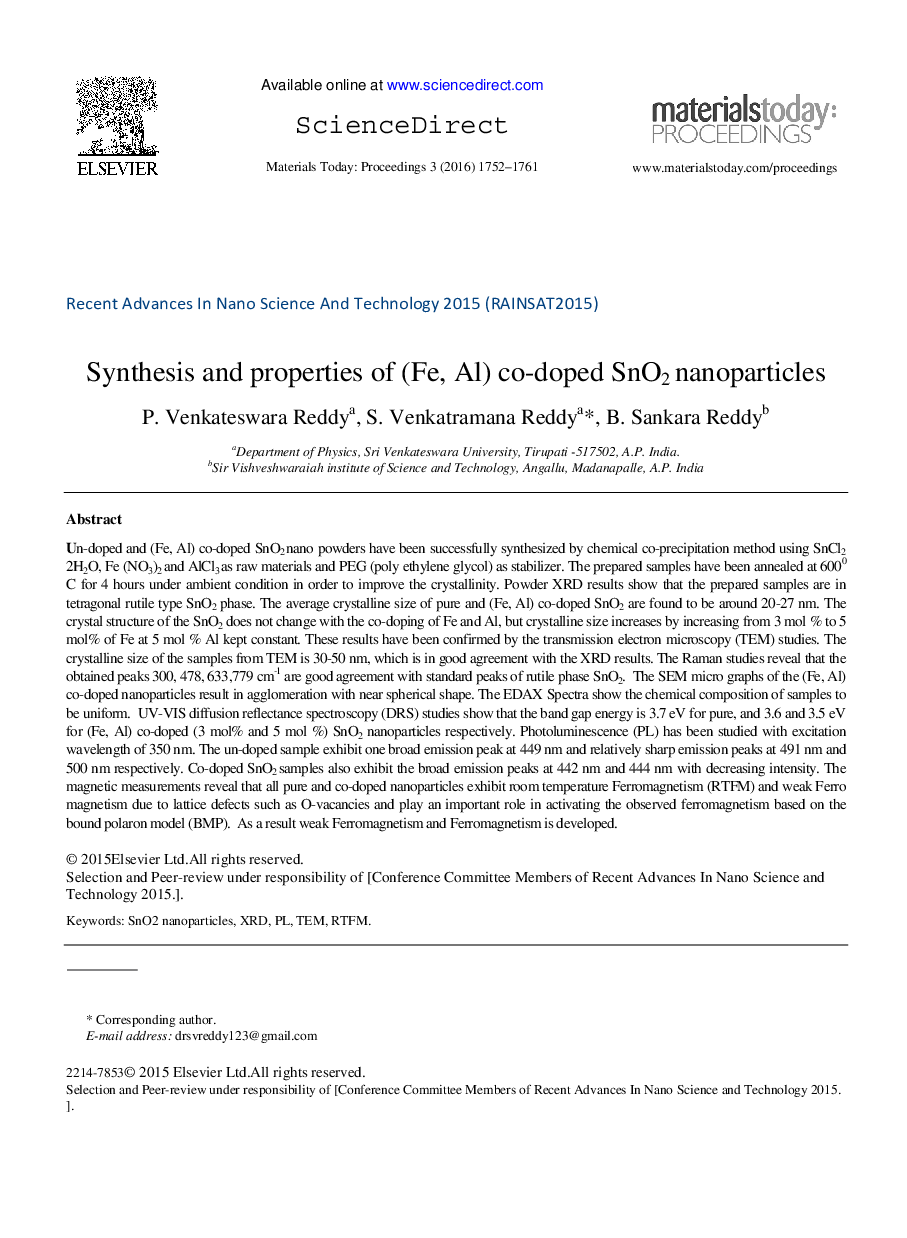| کد مقاله | کد نشریه | سال انتشار | مقاله انگلیسی | نسخه تمام متن |
|---|---|---|---|---|
| 1630837 | 1398815 | 2016 | 10 صفحه PDF | دانلود رایگان |

Un-doped and (Fe, Al) co-doped SnO2 nano powders have been successfully synthesized by chemical co-precipitation method using SnCl2 2H2O, Fe (NO3)2 and AlCl3 as raw materials and PEG (poly ethylene glycol) as stabilizer. The prepared samples have been annealed at 600°C for 4 hours under ambient condition in order to improve the crystallinity. Powder XRD results show that the prepared samples are in tetragonal rutile type SnO2 phase. The average crystalline size of pure and (Fe, Al) co-doped SnO2 are found to be around 20-27 nm. The crystal structure of the SnO2 does not change with the co-doping of Fe and Al, but crystalline size increases by increasing from 3 mol% to 5 mol% of Fe at 5 mol% Al kept constant. These results have been confirmed by the transmission electron microscopy (TEM) studies. The crystalline size of the samples from TEM is 30-50 nm, which is in good agreement with the XRD results. The Raman studies reveal that the obtained peaks 300, 478, 633,779 cm-1 are good agreement with standard peaks of rutile phase SnO2. The SEM micro graphs of the (Fe, Al) co-doped nanoparticles result in agglomeration with near spherical shape. The EDAX Spectra show the chemical composition of samples to be uniform. UV-VIS diffusion reflectance spectroscopy (DRS) studies show that the band gap energy is 3.7 eV for pure, and 3.6 and 3.5 eV for (Fe, Al) co-doped (3 mol% and 5 mol%) SnO2 nanoparticles respectively. Photoluminescence (PL) has been studied with excitation wavelength of 350 nm. The un-doped sample exhibit one broad emission peak at 449 nm and relatively sharp emission peaks at 491 nm and 500 nm respectively. Co-doped SnO2 samples also exhibit the broad emission peaks at 442 nm and 444 nm with decreasing intensity. The magnetic measurements reveal that all pure and co-doped nanoparticles exhibit room temperature Ferromagnetism (RTFM) and weak Ferro magnetism due to lattice defects such as O-vacancies and play an important role in activating the observed ferromagnetism based on the bound polaron model (BMP). As a result weak Ferromagnetism and Ferromagnetism is developed.
Journal: Materials Today: Proceedings - Volume 3, Issue 6, 2016, Pages 1752–1761